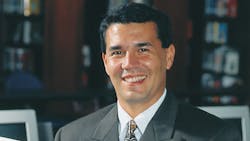Editor's Focus: School Buildings, Health and Learning
Facilities and their impact on learning and health have been an area of focus for many over the years. Most recently, the U.S. Green Building Council (USGBC) and its Center for Green Schools brought together in Washington, D.C., an impressive collection of thought-leaders in the field of buildings, public health and education for a research summit on childhood health and school buildings.
The November 17 meeting was held at Dunbar Senior High School in the nation’s capital. The day-long event included numerous presentations from research and design professionals, and even included “fast pitches” from a number of groups on proposed education facilities research where summit participants had the opportunity to vote on which would receive seed funding. Among some of the summit’s sessions:
- Productivity and Health. Examining environmental factors affecting productivity and health in schools and offices.
- Public Health and the Built Environment. Public health interventions to impact health through nutrition and physical activity.
- Indoor Air Quality. Connecting air quality in schools with student and teacher health and performance.
- School Design Research to Practice. Learning from post-occupancy study of the design of schools and classrooms.
In addition to sharing current research being conducted in the areas of education facilities, health and performance, results from a new USGBC poll were released to participants prior to general release to the public. It was reported that more than 90 percent of Americans agree that greater investment should be put toward upgrading U.S. public school buildings. Energy conservation and improved student performance were listed as the primary reasons why facilities should be upgraded,
Hosting the meeting at Dunbar Senior High School, an impressive facility that exemplifies many of the best practices discussed at the summit, was a perfect setting to the day’s events. The school was awarded a Gold Citation in last’ year’s AS&U Educational Interiors Showcase.
Hopefully, this is the first of many collaborative brainstorming sessions on the future of research on school facilities, health and performance. The results that such discussions can help accomplish will go a long way in helping shape the future of education design and planning.
